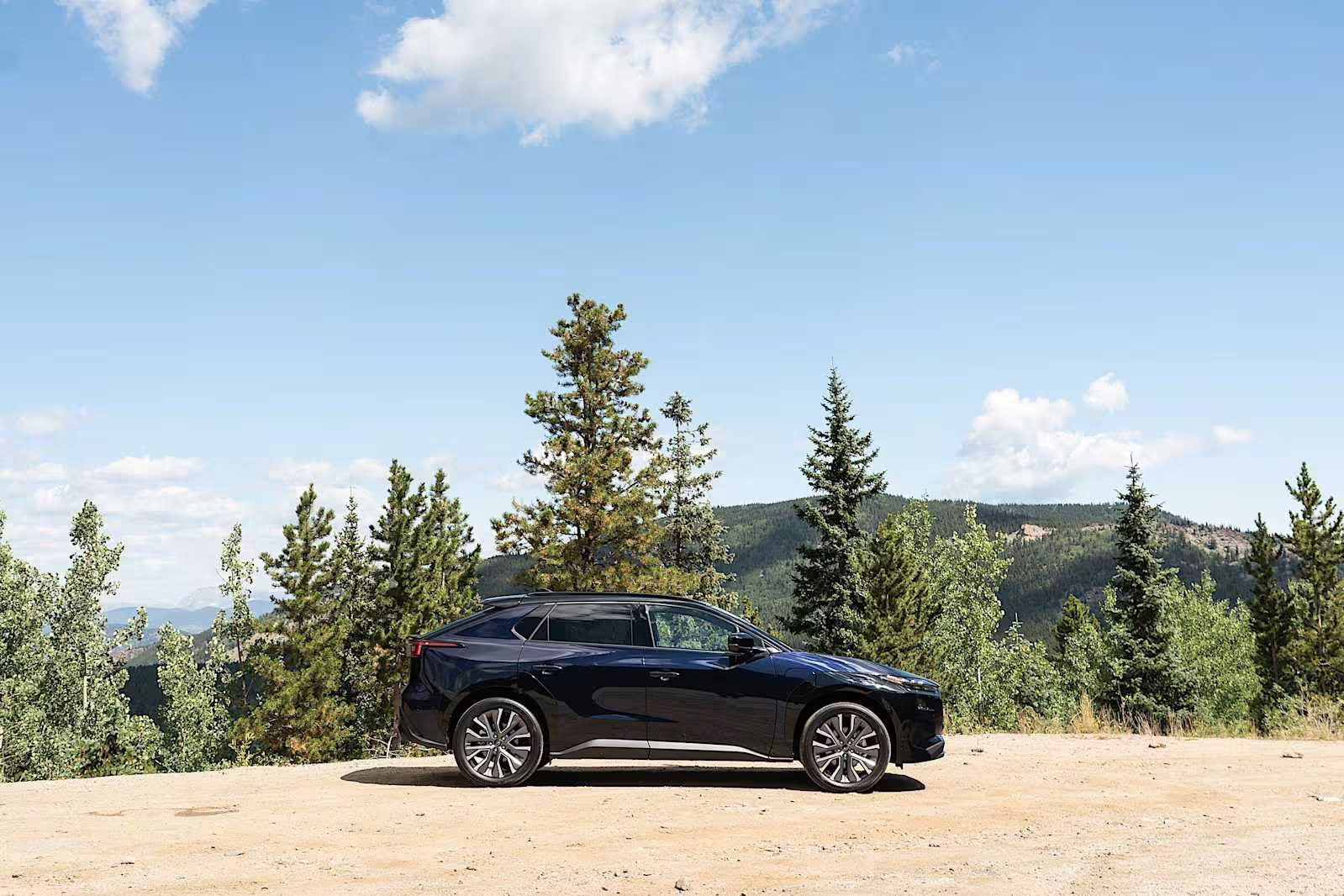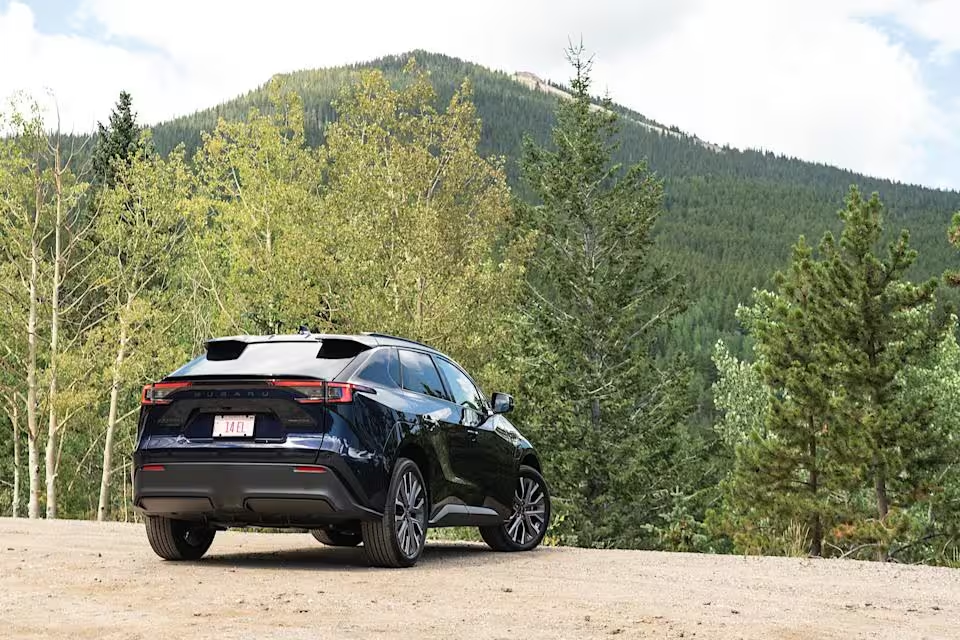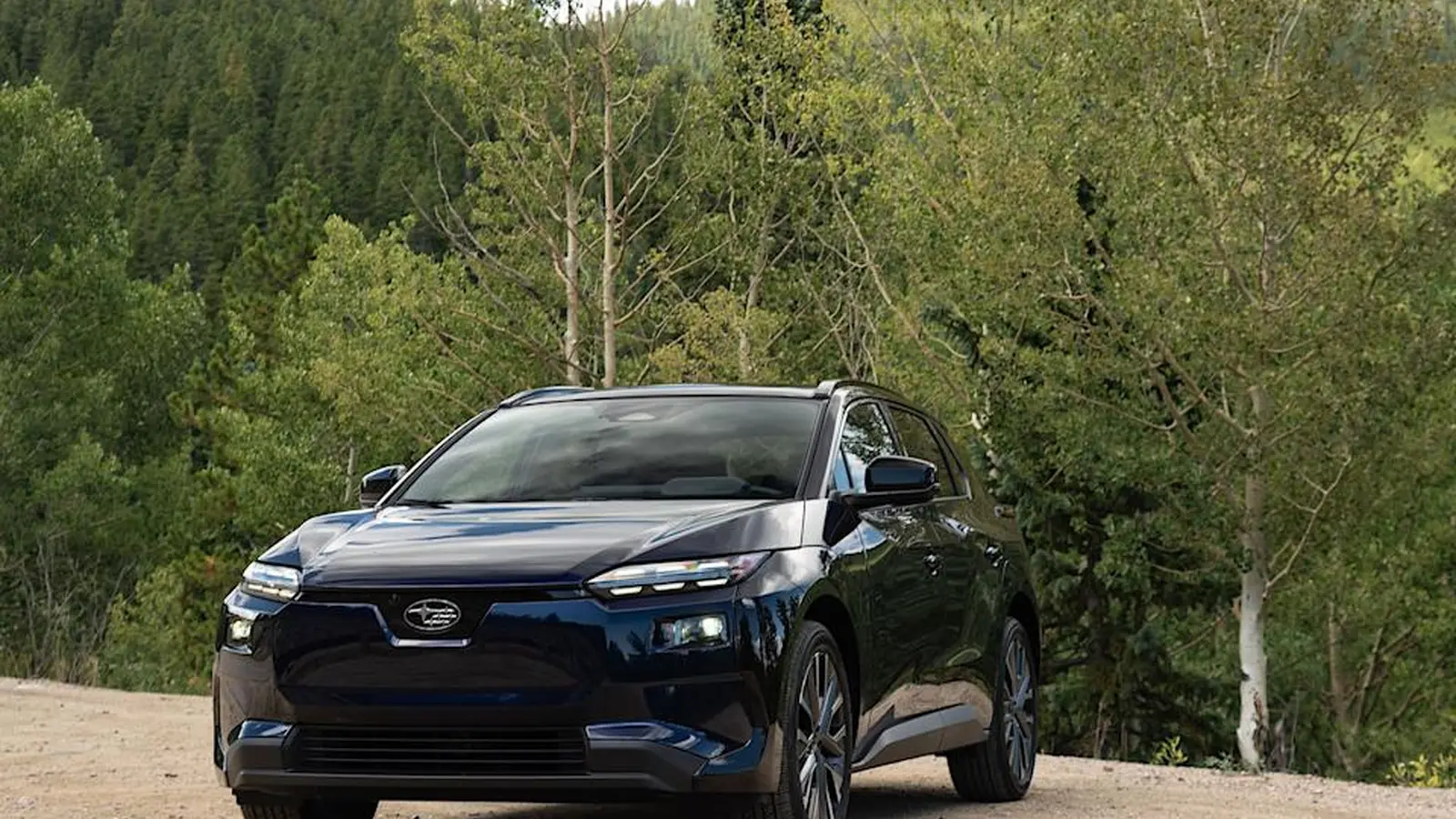8 Minutes
A much-improved Solterra
When Subaru debuted its first electric model in late 2021, the Solterra arrived with solid intentions but middling appeal. The original package—roughly 220 miles of range and 215 horsepower—left the compact electric SUV competing in the middle of a rapidly accelerating EV segment. Quirky styling and average tech made it a difficult recommendation next to leaders such as the Tesla Model Y or the latest Hyundai EVs.
For 2026, Subaru hasn’t reinvented the Solterra so much as refined it: more range, more power, better software and a modernized interior layout, all while keeping the starting price largely unchanged at $TKTK. The result is a noticeably more persuasive electric SUV that addresses the biggest shortcomings of the original while preserving Subaru’s practical, all-weather character.
More of what buyers want
Range and efficiency upgrades
Subaru lifted the Solterra’s EPA-estimated driving range to 288 miles — a meaningful jump from the previous 220-mile rating. That boost arrives despite a battery pack that is only slightly larger: the 2026 model uses a 74.7 kWh battery versus 72.8 kWh before. The extra distance is the product of many incremental gains: improved aerodynamics, revised motor and inverter efficiencies, updated electronics and other behind-the-scenes engineering tweaks developed alongside Toyota (the 2026 Solterra is mechanically identical to the updated Toyota bZ series).
For most daily drivers, 288 miles removes much of the typical range anxiety and positions the Solterra as a practical choice for commuters and families who still want EV ownership without sacrificing usability.
Charging and compatibility
Charging convenience gets a clear upgrade for 2026. Subaru moves the Solterra to a Tesla-style NACS charging inlet, bringing easier access to Tesla’s charging ecosystem. The car ships with adapters to remain compatible with J1772 and CCS chargers. Peak charging power rises by roughly 50 percent from the prior model, reaching up to 150 kW. While not class-leading among EVs that can exceed 200 kW or more, 150 kW is a sizable step forward for practical fast-charging during long trips.

Specifications: Key numbers at a glance
Core specs
- Battery: 74.7 kWh (usable)
- Range: Up to 288 miles (EPA estimate)
- Peak DC charging: Up to 150 kW
- Power (XT trims): 338 horsepower, all-wheel drive
- Previous model: ~72.8 kWh, 220 miles, 215 hp
- Cargo space: 23.8 cubic feet behind the rear seats
These figures place the Solterra well within the mainstream of compact electric SUVs: no longer an outlier, but not the outright class leader in any single spec. Instead, Subaru has aimed for a balanced package of range, power and everyday utility.
Interior and technology: A friendlier cabin
The cockpit has been substantially rethought. The awkward layout of the first-generation Solterra has given way to a cleaner, more usable design centered on a 14-inch touchscreen. The screen provides easy access to navigation, media and vehicle settings and acts as a large canvas for wireless Apple CarPlay and Android Auto.
Practical touches include two wireless charging pads up front and a pair of 60-watt USB-C ports in the second row, allowing passengers to power laptops or fast-charge devices without adapters. Rear-seat comfort is good for the segment, with respectable headroom and legroom; the cargo area offers 23.8 cubic feet behind the rear seats, which is competitive for compact EV crossovers.

Safety and driver assistance
Subaru’s long-standing EyeSight driver-assist suite is standard on the updated Solterra. The system bundles automatic emergency braking, adaptive cruise control and a lane-centering function. During busy traffic conditions, the adaptive cruise is capable of bringing the vehicle to a full stop and resuming automatically — a useful feature for commuting — while lane-centering helps maintain composure on multi-lane highways.
Driving impressions: composed rather than ferocious
The most potent Solterra XT Touring I drove produces 338 horsepower and immediate EV torque, but acceleration is purposeful rather than ballistic. The Solterra feels quick in daily driving, yet Subaru tunes the power delivery toward a more relaxed, confidence-inspiring character rather than outright sportiness. If you want a drag-strip EV, there are more aggressive offerings; if you prefer predictable, linear performance and secure traction in mixed conditions, the Solterra delivers.
.avif)
Steering is sharp and communicative, but the chassis prioritizes stability over playful oversteer. Traction and stability control systems intervene quickly at the first hint of slip, cutting power to protect grip. That safety-first behavior will appeal to buyers who treat the Solterra as a family transport or all-weather commuter, though it may disappoint enthusiasts seeking sideways antics on gravel roads.
Off-road capability is modest but credible. A short dirt course arranged by Subaru demonstrated that the Solterra handles gravel and light trails with composure — suitable for weekend adventures and rougher service roads that many mass-market SUVs will encounter.
Ride comfort is generally good: the Solterra swallows most bumps and isolates wind noise well at highway speeds, creating a serene cruising environment. Over larger potholes and rough patches the ride can feel firmer, and some road noise does find its way through the suspension on broken surfaces.
Design and packaging
The 2026 Solterra retains Subaru’s practical, upright SUV silhouette while refining details for better aerodynamic efficiency. The exterior tweaks are subtle but purposeful, contributing to the improved range without dramatically changing the vehicle’s identity. Interior materials and layout have been upgraded to feel more contemporary and user-friendly, aligning the cabin with current buyer expectations for tech and comfort.

Market positioning and comparisons
Subaru has recalibrated the Solterra to compete on real-world strengths: balanced range, standard all-wheel drive, strong safety credentials and user-friendly technology. While it still falls short of the longest-range models from Tesla and certain Hyundai offerings, the gap is now narrow enough that buyers can prioritize Subaru’s distinctive advantages: AWD capability, proven safety systems and a reputation for durability.
Compared with the Tesla Model Y, the Solterra is no longer an obvious technical underdog — especially as Tesla’s global appeal has fluctuated and NACS compatibility reduces charging friction. Against Hyundai’s Ioniq or Kia EV crossovers, the Solterra competes better on brand identity and off-road confidence, even if numerical range or charging peak figures tilt in favor of the Korean rivals.
Who should consider the 2026 Solterra?
If you’re a buyer who values a balanced EV package with real-world range, all-wheel drive as standard, modern infotainment and strong safety tech, the refreshed Solterra deserves a test drive. It’s a particularly smart choice for owners in mixed-weather regions who want the benefits of electrification without sacrificing Subaru’s practical DNA.
Wrap-up
Subaru’s 2026 Solterra largely corrects the missteps of the initial launch. The meaningful increases in range and power, practical charging improvements and a much-improved interior add up to an electric SUV that finally feels like the model Subaru intended to bring to market. It may not top range charts or charging-speed leaderboards, but the Solterra’s well-rounded approach — standard AWD, comprehensive safety systems and thoughtful packaging — makes it an increasingly compelling option in the compact electric SUV segment.
In short: better late than never. The 2026 Solterra is no longer just Subaru’s first EV; it’s a credible, competitive choice for buyers looking for a practical, safe and user-focused electric SUV.
Source: engadget


Leave a Comment